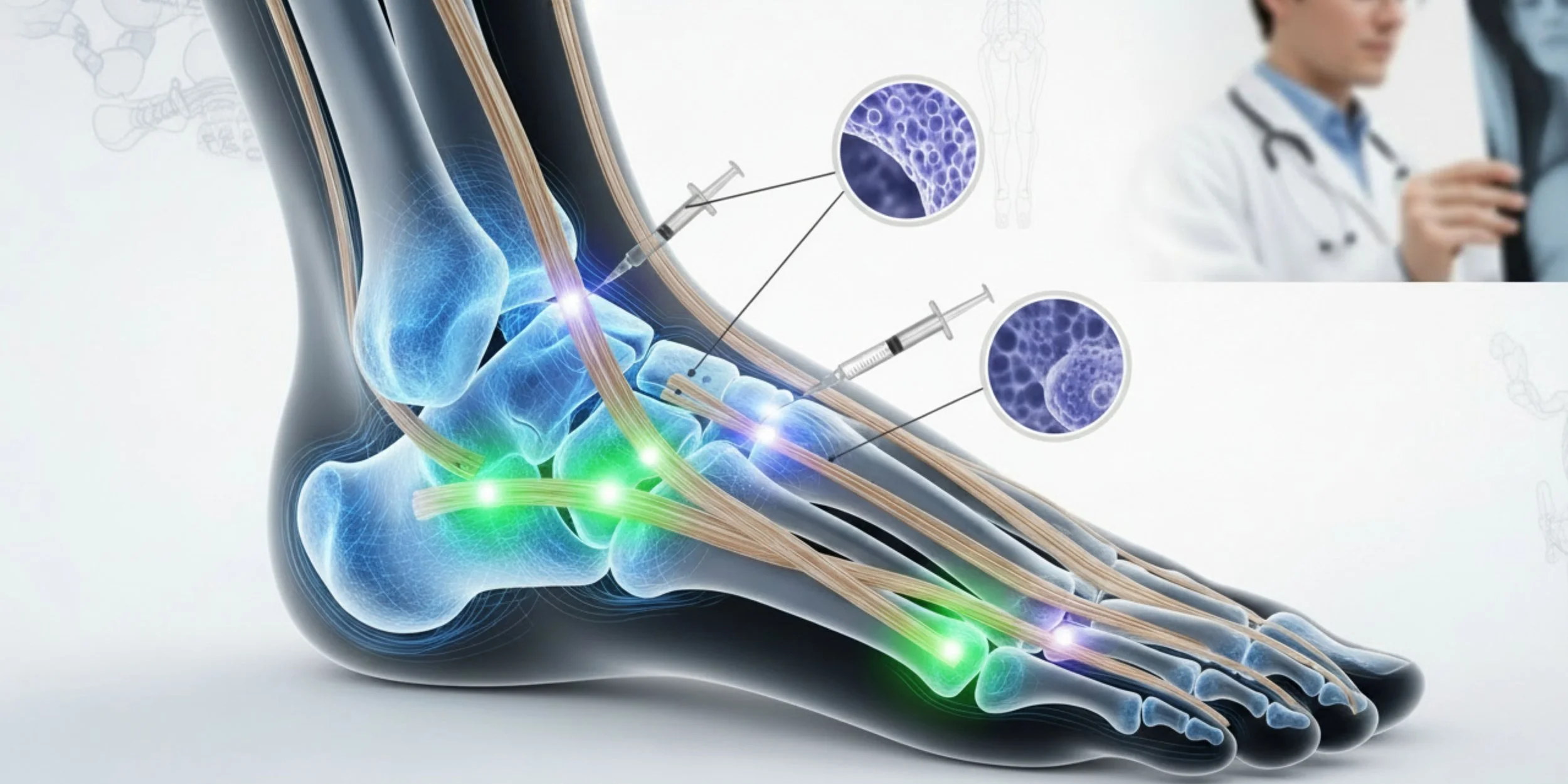Healing Diabetic Foot Ulcers: How Nutrition Helps
Diabetic foot ulcers (DFUs) are a common and serious complication of diabetes. These open sores, often found on the bottom of the feet, pose significant risks due to poor circulation, neuropathy, and impaired healing in diabetic patients. While proper medical care is critical for treating these ulcers, the importance of nutrition in the healing process cannot be overstated.
In this blog, we will explore the vital role nutrition plays in helping to heal diabetic foot ulcers and why the foods you eat could make a significant difference in your recovery.
The Healing Power of Nutrition
Healing a diabetic foot ulcer requires more than just topical treatments and medications. The right nutrition can enhance the body’s ability to fight infection, repair damaged tissues, and reduce inflammation. Diabetic patients often have compromised immune systems, and a well-rounded diet can support the body in overcoming these challenges.
Here are the primary ways that nutrition affects wound healing:
Boosts immune function: Certain nutrients support the immune system, helping the body fight off infections that can complicate diabetic ulcers.
Supports collagen formation: Collagen is a protein that helps close wounds by forming new tissues. Proper nutrition ensures collagen synthesis is effective.
Reduces inflammation: Chronic inflammation slows down the healing process. Anti-inflammatory foods can counteract this, improving circulation and reducing swelling.
Essential Nutrients for Healing Diabetic Foot Ulcers
1. Protein for Tissue Repair
Protein is one of the most critical nutrients for healing wounds like diabetic foot ulcers. It provides the building blocks your body needs to regenerate tissue, close wounds, and maintain muscle mass, which can be lost during long-term illness.
Include more of these protein-rich foods:
Lean poultry (chicken, turkey)
Fatty fish (salmon, mackerel)
Eggs
Dairy (low-fat yogurt, cheese)
Beans, lentils, and legumes
2. Vitamin C for Collagen Synthesis
Vitamin C plays a vital role in collagen production, helping the body repair skin and tissues. It also acts as a powerful antioxidant, protecting cells from damage and reducing inflammation around the wound.
Vitamin C-rich foods:
Citrus fruits (oranges, grapefruits, lemons)
Bell peppers
Strawberries and kiwi
Leafy greens like spinach and kale
3. Zinc for Immune Support
Zinc is crucial for proper immune function and skin integrity. A deficiency in zinc can significantly slow wound healing and make the body more vulnerable to infection, which can be especially dangerous for diabetic patients.
Zinc-rich foods:
Shellfish, particularly oysters
Red meat and poultry
Pumpkin seeds and nuts
Whole grains and fortified cereals
4. Vitamin A for Skin Regeneration
Vitamin A is key in supporting your body’s ability to produce new skin cells and repair damaged tissue. This vitamin also strengthens the immune system, which helps the body fend off infections, a significant risk for those with diabetic ulcers.
Foods rich in vitamin A:
Sweet potatoes, carrots, and squash
Dark leafy greens
Eggs
Liver and cod liver oil
5. Omega-3 Fatty Acids for Reducing Inflammation
Chronic inflammation can delay wound healing, and omega-3 fatty acids are known for their potent anti-inflammatory properties. They also support heart health and circulation, which are crucial for diabetic patients.
Omega-3-rich foods:
Fatty fish (salmon, tuna, sardines)
Chia seeds and flaxseeds
Walnuts
Omega-3 fortified foods (like eggs)
6. B Vitamins for Nerve and Blood Health
B vitamins, especially B12 and folic acid, are critical for nerve function and blood circulation. Diabetic patients often struggle with neuropathy, and a diet rich in B vitamins can improve nerve health, blood flow, and overall healing capacity.
B vitamin-rich foods:
Whole grains and fortified cereals
Meat and poultry
Eggs and dairy products
Dark leafy greens
Foods to Avoid for Better Healing
Just as certain foods can help heal diabetic foot ulcers, others can slow down the process or even worsen the condition. Here are foods to limit or avoid:
Processed Sugars and Refined Carbohydrates: These cause blood sugar spikes, which delay wound healing and increase the risk of infection. Avoid sugary snacks, sodas, and refined carbs like white bread.
Fried Foods: These foods are high in trans fats, which increase inflammation and impair circulation.
Excessive Sodium: High salt intake can lead to water retention, increasing swelling and making ulcers harder to heal.
Alcohol: Alcohol weakens the immune system and disrupts blood sugar control, both of which are essential for healing.
Hydration: An Overlooked Key to Healing
Staying hydrated is vital for maintaining proper circulation and skin health. Water helps transport essential nutrients to the wound site, flushes toxins from the body, and keeps the skin supple. Make sure you drink plenty of water throughout the day to support the healing process.
Sample Healing Meal Plan
Here’s a simple meal plan designed to support the healing of diabetic foot ulcers through nutrition:
Breakfast:
Scrambled eggs with spinach and whole grain toast
A side of mixed berries
Lunch:
Grilled salmon on a bed of mixed greens with olive oil and lemon
Quinoa salad with cucumbers and cherry tomatoes
Snack:
A handful of walnuts and Greek yogurt
Dinner:
Baked chicken breast with steamed broccoli and sweet potatoes
A side of brown rice or barley
Dessert:
Fresh fruit with a sprinkle of chia seeds
Conclusion
When it comes to healing diabetic foot ulcers, nutrition is a powerful tool. By fueling your body with the right foods, you can enhance your immune system, speed up tissue repair, and reduce inflammation. It’s essential to work with your healthcare provider or a nutritionist to create a tailored eating plan that meets your specific needs. By incorporating the right nutrients into your diet, you can support the healing process and take control of your foot health.











